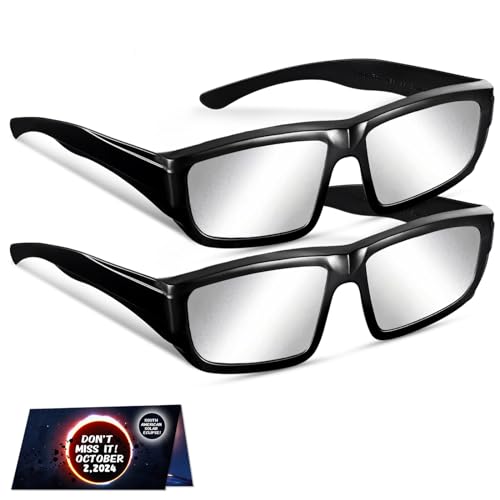As the 2024 Solar Eclipse approaches, excitement is building among astronomy enthusiasts and photographers alike. This rare celestial event offers a unique opportunity to witness the awe-inspiring beauty of the universe, but it also comes with serious safety risks. Observing and photographing a solar eclipse without proper protective gear can lead to severe eye damage or even permanent blindness. In this article, we’ll emphasize the importance of eye safety during the eclipse and provide advice on the correct protective gear to ensure a safe and enjoyable experience.
Understanding the Risks
During a solar eclipse, the Moon partially or fully blocks the Sun’s light, creating a mesmerizing spectacle in the sky. However, it’s crucial to understand that even during the partial phases of an eclipse, the Sun’s ultraviolet (UV) and infrared (IR) radiation can cause irreversible harm to your eyes.
The Sun’s intense light can damage the retina, the light-sensitive tissue at the back of the eye responsible for vision. This damage, known as solar retinopathy, occurs when the retina is exposed to too much UV and IR radiation, leading to a permanent blind spot or loss of central vision.
It’s important to note that the pain receptors in our eyes are not triggered by UV and IR radiation, so you may not feel any discomfort while damaging your vision. This is why using proper protective gear is essential when observing or photographing a solar eclipse.
Choosing the Right Eclipse Glasses
When observing a solar eclipse, the most important piece of protective gear is a pair of certified eclipse glasses. These glasses are specifically designed to filter out the Sun’s harmful UV and IR radiation, allowing you to safely view the eclipse.
When selecting eclipse glasses, ensure they meet the ISO 12312-2 international safety standard. This standard ensures that the glasses provide adequate protection against the Sun’s radiation. Look for glasses with lenses made from black polymer or aluminized polyester, as these materials effectively block harmful rays.
Here are some recommended eclipse glasses that meet the ISO 12312-2 standard:
- Symphony Eclipse Glasses – These affordable glasses feature scratch-resistant, ISO-certified lenses and a sturdy cardboard frame.
- Celestron EclipSmart Solar Eclipse Glasses – Celestron’s eclipse glasses offer a comfortable fit and ISO-certified protection, making them a reliable choice.
- American Paper Optics Eclipse Glasses – These glasses are ISO-certified and feature a unique design that allows you to fold them flat for easy storage.
Remember, never use regular sunglasses, polarized filters, or homemade filters to view a solar eclipse, as they do not provide adequate protection against the Sun’s radiation.
Protecting Your Camera Equipment
In addition to protecting your eyes, it’s crucial to safeguard your camera equipment when photographing a solar eclipse. Pointing your camera directly at the Sun without proper filtration can cause severe damage to your lens, sensor, and other components.
To safely photograph the eclipse, you’ll need a certified solar filter that fits over the front of your lens. These filters are specially designed to block the Sun’s harmful radiation while allowing enough light to pass through for proper exposure.
Here are some recommended solar filters for camera lenses:
- Thousand Oaks Optical Solar Filter Film – This filter film can be cut to size and mounted on the front of your lens using a custom-made holder or tape.
- Baader AstroSolar Safety Film – This high-quality filter film is available in various sizes and can be easily attached to your lens using the included mounting rings.
- Gravitis AstroSnap: DIY Solar Filter Sheet Variants for Enhanced Sun Photography with Telescopes, Binoculars and Cameras – This pre-cut filter film comes in a range of sizes to fit different lens diameters and includes self-adhesive mounting rings for easy attachment.
Never use a solar filter that attaches to the eyepiece of your camera, as the intense heat and radiation can cause the filter to crack or shatter, resulting in severe damage to your equipment and eyes.
Safe Eclipse Viewing Practices
In addition to using proper protective gear, there are several safe viewing practices to keep in mind when observing or photographing a solar eclipse:
- Always inspect your eclipse glasses or solar filters before use. If you notice any scratches, punctures, or damage, discard them immediately and obtain a new pair.
- When using eclipse glasses, ensure they fit securely and do not allow any unfiltered light to enter from the sides.
- Do not use eclipse glasses or solar filters that are more than three years old, as the protective materials may degrade over time.
- If you wear prescription glasses, put the eclipse glasses on over them or use a handheld solar viewer.
- Supervise children closely during the eclipse to ensure they use their protective gear correctly and do not remove it prematurely.
- During the brief moments of totality, when the Moon completely covers the Sun, it is safe to view the eclipse without protective gear. However, be prepared to look away or replace your glasses as soon as the first glimmer of sunlight appears at the end of totality.
Conclusion
Observing and photographing a solar eclipse is a once-in-a-lifetime experience that should be enjoyed safely. By emphasizing the importance of eye safety and using the correct protective gear, you can ensure a memorable and risk-free eclipse viewing experience.
Remember to choose eclipse glasses and solar filters that meet the ISO 12312-2 international safety standard, and never use regular sunglasses or homemade filters. Inspect your gear before use, follow safe viewing practices, and supervise children closely.
By prioritizing safety, you can fully immerse yourself in the awe-inspiring beauty of the 2024 Solar Eclipse while protecting your eyes and camera equipment. With the right preparation and precautions, you’ll be ready to witness and capture this extraordinary celestial event without compromising your well-being.
Last Updated on April 8, 2024 by TPW


